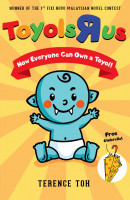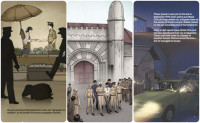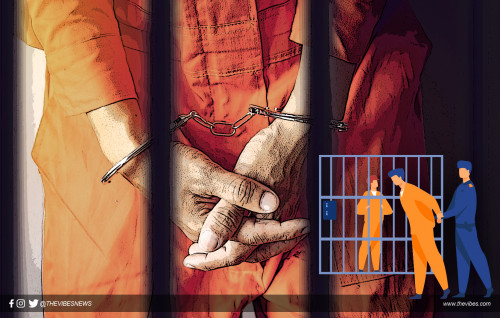NOBEL Prize-winning author Kazuo Ishiguro was born in Japan, but grew up in England, having moved there at the age of five. ‘Klara and the Sun’ is his eighth novel. It takes place in a near and somewhat disturbing future.
We first meet mononymous Klara, who narrates this fascinating novel, in the shop where she lived when she was ‘new’. This use of ‘new’ as opposed to ‘young’ is the first hint that Klara is not human. She is an Artificial Friend, with the unfortunate acronym of AF (a slang offensive superlative familiar to internauts). Whether this is Ishiguro’s little joke, or whether he is oblivious of the disconcerting double meaning is unclear.
Klara, and her somewhat dim-witted companion Rosa, are moved around the shop by The Manager, and eventually given pride of place in the window display. This affords Klara her first unbroken view of the outside world, which is confined to a busy one-way shopping street, thronging with taxis, pedestrians, joggers, and when it rains, Umbrella Couples.
Though inexperienced, Klara is observant and quick to draw conclusions and inferences about and from the world around her. She sees an old couple, reunited possibly after a long separation, bathed in the beatific light of the ‘sun’s pattern’. Across the street, Beggar Man and his dog appear dead in a doorway, ignored by passers-by but mourned by Klara, until they are miraculously resurrected by the sun’s life-giving rays. Klara and her fellow AFs are solar-powered. She anthropomorphises (if an android can anthropomorphise) and genders the sun in the masculine; astral deity to Klara’s artificial animism; atavistic and heliocentric AF.
Klara also witnesses an altercation between two taxi drivers, an incandescent incident of punch-throwing and blood-spilling road rage. She looks within herself for any trace or echo of the violence or anger the irate taxi drivers display, but finding none, Klara (and the reader) realises she is incapable of aggression or rage.
Klara is visited on several occasions by a sickly adolescent named Josie, who walks with a limp. Josie stands outside the shop window and speaks to Klara through the glass, then eventually, having convinced The Mother, brings Klara home to their isolated house in the countryside.
As well as Josie and The Mother, the house is inhabited by Melania Housekeeper, who speaks in broken English. Klara soon meets a sharp-witted neighbour boy named Rick, who lives alone with his eccentric impoverished mother and spends a good deal of his time flying and engineering drones that Klara describes, whether accurately or not, as birds.
Unlike Josie, Rick hasn’t been ‘lifted’ – an unexplained process, perhaps akin to genetic enhancement, that has cost Josie her health and a dead sister.
Ishiguro seems well-disposed to the idea of benevolent artificial intelligence (AI) and a comfortable coexistence with humans, much more so than Ian McEwan in his novel ‘Machines Like Me’ – which plays out a not entirely dissimilar conceit – or those who see AI as humanity’s greatest potential threat, including but not limited to Elon Musk and the late great Stephen Hawkings.
Ishiguro is more Rousseau, naïve and trusting, seemingly believing in the noble AI, though Klara’s worldview echoes Voltaire’s satirical ‘Candide’, with the unerring optimism that despite all evidence to the contrary everything is copacetic and for the best in the best of all possible worlds.
The reader understands some of Klara’s limitations, which, despite her adaptability, she fails to see herself, because cognitive blind spots are essentially impossible to detect, for machines and for humans.
But Klara is more than a companion or a glorified doll for Josie to play with. She has the ability to mimic and copy Josie’s actions and words, even her awkward gait, replicating them with perfect fidelity. The novel explores the possibility that a machine could be programmed to be identical to humans, right down to the actions of the tiniest synapse, treading the sidelines of theories long proposed by futurists and writers like Ray Kurzweil, that it may eventually be possible to upload human consciousness into machines and thereby achieve near-immortality, a ghastly prospect, but one which appeals to a section of evangelical tech cults.
Rick’s mother is more prosaic, wondering whether she should treat Klara like a guest or a vacuum cleaner, reminding us that Klara is, despite her insightful mind, a domestic appliance, purchased for the convenience of the household and thereby subject to being treated as such. Later in the novel Klara herself even conforms to this utilitarian identity, largely confining herself to the interior of a small storage room on the top floor of the house.
Ishiguro’s near future seems at odds with what we might expect. While there is technology advanced enough to have sentient solar-powered robots, there are still taxi drivers rather than self-driving cars, and pollution, an affront to the sun, produced by Klara’s nemesis, the infernal Cootings Machine.
Klara’s modes of visual processing sometimes play a role in her descriptions of scenes. In conditions of low or overly bright light, or where there are many things happening at once, her perception breaks down, becoming anarchic. She sees people as stacked cones, basic geometrical shapes, sometimes objects appearing two-dimensional. In other instances she sees several frames at once, hands in one frame, mouths in another, split-screen in the mode of certain French New-Wave cinema directors, or more recently in the latest series of Noah Hawley’s ‘Fargo’.
Memories and reality occasionally simultaneously play out in separate frames, posing questions about Klara’s perception of time: if memories can be reproduced with perfect fidelity how is it possible to distinguish the past from the present?
Two of Ishiguro’s previous novels – ‘The Remains of the Day’ and ‘Never Let Me Go’ – have been adapted for cinema. ‘Klara and the Sun’ seems another eminently suitable candidate.
‘Klara and the Sun’ is one of this year’s most interesting, imaginative, thought-provoking and enjoyable reads. It will no doubt be a commercial success, and will very possibly earn its author another crop of literary prizes. – The Vibes, March 27, 2021























